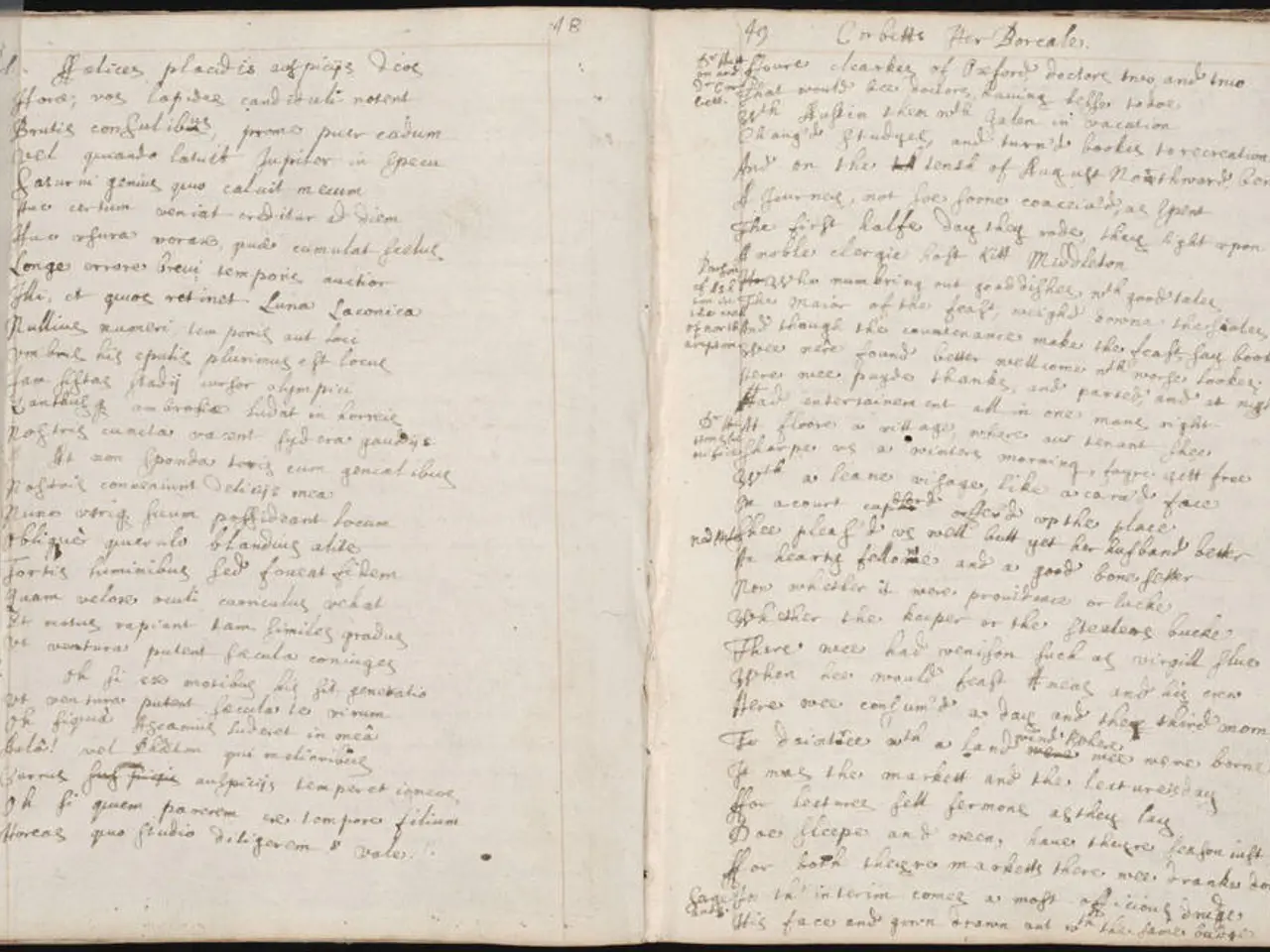Uncovering the Origin of our Alphabet: The Evolution of Written Communication
In the dawn of civilisation, around 7000 BCE, writing developed independently in the Middle East, China, and Mesoamerica, marking a significant milestone in human history. This article traces the evolution of alphabets, from their origins to their profound influence on modern communication, culture, and technology.
Origins and Evolution
The first widely used consonantal alphabet, known as the Phoenician Alphabet, was developed between 1700 and 1500 BCE. Derived from Proto-Sinaitic, which in turn came from Egyptian hieroglyphs, the Phoenician Alphabet established a right-to-left writing direction and employed 22 consonant letters [4]. In around 800 BCE, the Greeks innovated by adding explicit vowel letters, creating what is regarded as the first true alphabet. This Greek alphabet adapted the Phoenician script and introduced vowel notation, profoundly influencing many alphabets that followed, including the Latin and Cyrillic scripts [1][3][4].
The Latin Alphabet, originating in Italy around 600 BCE, was a blend of Phoenician, Greek, and Etruscan scripts. Early Latin had fewer letters, with later additions adapting Greek letters for new sounds or loanwords during the 3rd century BCE and medieval period [2]. The Paleo-Hebrew Alphabet, an early script evolving from Proto-Canaanite, was used primarily for writing Hebrew before being replaced by the Aramaic script [5].
Cultural Impact
The alphabetic approach revolutionised writing by simplifying the complexity of earlier systems like cuneiform and hieroglyphics, which required memorising hundreds of symbols. The spread of the Phoenician script via trade across the Mediterranean allowed numerous cultures, including Greeks, Romans, and later European peoples, to adapt and innovate alphabets tailored to their languages [3].
The Greek innovation of vowel representation enabled greater accuracy in transcribing speech sounds, influencing literacy, literature, record-keeping, and administrative functions in Western civilization. The Latin script, a direct descendant of Greek and Phoenician alphabets, became the dominant writing system for Europe and later the Americas, shaping modern global communication, culture, and technology [3].
The diversity of descendant scripts, such as Aramaic, Hebrew square script, Arabic abjad, Brahmic script, Cyrillic, runic, Gothic, reflects alphabets’ adaptability to different languages and contexts across Afro-Eurasia [3][4].
Modern Developments
The surge of virtual media has reshaped the communication landscape, influencing both the structure and function of language and script, primarily toward embracing multimodality, informal abbreviations or acronyms, the introduction of neologisms, and the emergence of new communication genres [4]. Additionally, the study of letters and letter combinations within a language has a unique term called orthography, while conlangs, intentionally created languages for real-world or fictional speakers, have grown in popularity for understanding fandoms, imaginary geographies, and virtual communities [4].
Directionality and Cultural Significance
Directionality, or the written orientation of language, can influence how people spatially display time. For instance, the Korean alphabet, Hangul, adheres to the alphabetic principle and is configured in blocks, enhancing overall efficiency in reading [4]. On the other hand, Middle Eastern languages are typically right-to-left, while East Asian languages are frequently written top-to-bottom [4].
Dr. Hye K. Pae, a Professor of Psycholinguistics and Applied Linguistics, emphasises that written signage is a crucial aspect of a culture's general anthropology [4]. Writing is a unique process used for various purposes, including communication and representation of language visually [4].
In summary, alphabets originated from ancient Semitic consonantal scripts, were transformed by Greek introduction of vowels, and evolved through cultural exchanges and adaptations, culminating in many of the world's modern writing systems. Their development has deeply influenced literacy, cultural transmission, and communication worldwide.
- The Phoenician Alphabet, derived from Egyptian hieroglyphs and developed between 1700 and 1500 BCE, established a right-to-left writing direction and was crucial in shaping the Greek Alphabet, created around 800 BCE with explicit vowel letters [4].
- The surge of virtual media and technology has influenced the structure and function of language and script, promoting multimodal communication, informal abbreviations, neologisms, and the emergence of new communication genres [4].
- The study of letters and letter combinations within a language, known as orthography, and the creation of intentionally designed languages called conlangs have become increasingly significant in understanding fandoms, imaginary geographies, and virtual communities [4].
- The diversity of descendant scripts, such as Aramaic, Hebrew square script, Arabic abjad, Brahmic script, Cyrillic, runic, Gothic, reflects alphabets’ adaptability to different languages and contexts across Afro-Eurasia, and can even influence how people spatially display time [3][4].




